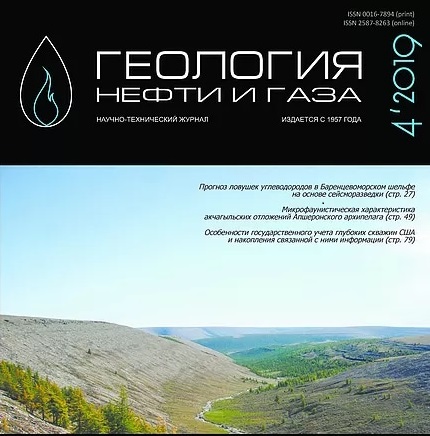The article “Hydrocarbon traps potential on the Barents sea shelf based on 2D and 3D seismic data” was published in the “Oil and Gas Geology” journal #4 from 2019 by “INGEOSERVICE” LLC staff members.
The Barents Sea region has the greatest potential of oil and gas fields discoveries. The following fields like Shtokmanskiy, Ledoviy, Ludlovskiy, Murmanskiy and Severo-Kildinskiy fields were discovered in recent years there.
All the above fields were discovered in the Middle Yurassic and Triasssic sediments. Since the new data appeared about geological structures features of oil and gas bearing and oil and gas potential complexes resulting from 2D and 3D seismic works conducted by PJSC Gazprom, it became possible to get bet to the issue of paradigm question about oil and gas exploration paradigm.
The obtained data contained information about hydrocarbon deposits structures, the ways of reservoir fluids ascending migration, the guide role of fault tectonics when hydrocarbon fields forms, the direction of the main regional tectonic stresses, prevailing structural deformations, the existence of horizontal stresses, tectonic and physical factors, affecting the vertical permeability in the subsurface, the conditions of gas accumulations deforming and much more.
Thus, the modern 3D seismic date allowed to get back to the issue of clarifying the petroleum potencial by studying the mechanism of hydrocarbon traps formation in the terms of tectonic activity of the Barents marine paleorift system. 2D/3D seismic results allow to extend the stratigraphic diapason of g hydrocarbon deposits prediction from Carboniferous -Permian to Cretaceous sediments. The wide range of types of hydrocarbon traps were identified, that had been formed in the Barents Sea basin, namely: structural, lithological, stratigraphic, tectonic, combination. However, the proportion e of structural traps are insignificant, while the majority of identified traps are non-structural. In the article there are examples of hydrocarbon traps identification that is typically for Paleozoic and Mesozoic stratigraphic complexes.
The authors: Smirnov O.A. («INGEOSERVICE» LLC), Borodkin V.N (Tyumen Industrial University), Lukashov A.V. («INGEOSERVICE» LLC), Kurchikov A.R. (Russian Academy of Science), Komgort M.V. (Tyumen Industrial University), Shestakova N.M. («INGEOSERVICE» LLC), Pogretskiy A.V.(«Gazprom Geologorazvedka» LLC).



